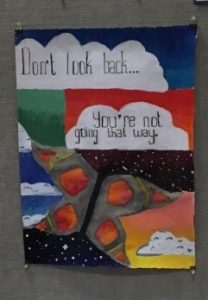by Verity Ahlin
Boston has no shortage of rich history and distinguished institutions dedicated to preserving that history. Simply walking down Newbury Street will land you at one of these institutions, and may inspire you to investigate your own family …

 The exhibit is hard to miss. As you cross the threshold into T
The exhibit is hard to miss. As you cross the threshold into T